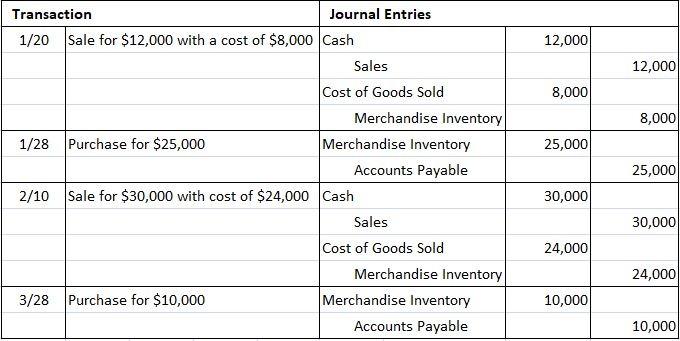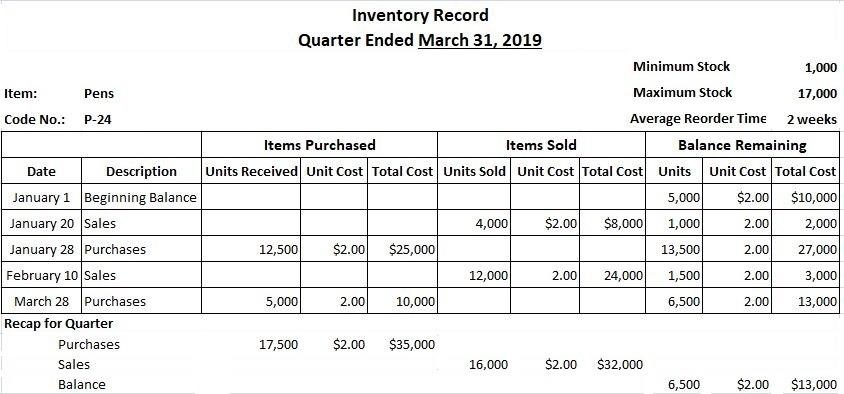A perpetual inventory system is a method of continuously accounting for the current state of an organization's inventory. In perpetual inventory systems, computer programs and software are typically used to record and report transactions as soon as they take place. Before the rise of digital technology, companies avoided perpetual inventory systems due to the time-consuming nature of the manual work involved. Rather than asking employees to perform constant record-keeping, firms had more productive tasks for their workers. Instead, prior to the widespread use of computers, the Internet, and other digital technologies, it was common for a company to use a periodic inventory system. Periodic systems involve the completion of accounting at the end of a given period. Recently, computing systems and other input devices, networking technologies, and Internet-based applications have taken over and made perpetual inventory systems less burdensome for employees. Perpetual inventory systems correctly reflect the amount of inventory on hand. They maintain a running balance of both the inventory on hand and the cost of goods sold. These balances can be recorded in units or in units and dollars. Management is, therefore, always aware of inventory levels and can make timely purchases that ensure the desired inventory levels. Perpetual inventory systems have been enhanced in recent years using computers and electronic point of sale devices such as credit card readers. However, even with such sophisticated equipment, perpetual records may be kept only in units, with the cost of ending inventories and goods sold determined by the periodic inventory system. For example, optical scanners are used in markets to keep track of inventory quantities, but at the end of the accounting period, a physical inventory is performed. This involves computing the cost of goods sold during the period and the appropriate cost of the ending inventory. Under a perpetual inventory system, companies perform inventory counting and record transactions such as the following: Taken together, these transactions reflect the current inventory levels. By relying on digital technologies, perpetual inventory systems reduce the need to physically count a company's inventory. Also, the latest inventory balances are reflected instantly. A perpetual inventory system is easier to maintain than a periodic system. Accountants don’t have to constantly adjust the changes in inventory levels since everything is done by the computing system (for the most part). However, perpetual inventory systems require manual adjustments in the event of theft, breakage, or unrecorded transactions. This is because these adjustments cannot be reflected on their own by the computing system. For businesses in which transactions such as purchasing, selling, and moving inventory happen every second, perpetual inventory systems are invaluable in helping to keep track of what is going on at all times. The journal entries used when bookkeeping in the perpetual inventory system are different compared to the ones used in a periodic system. To record inventory purchases: Accounts Payable/Cash Credit To record inventory sales: Revenue Credit Inventory Credit To record theft/breakage: Inventory Credit To understand perpetual inventory systems better, it is worth considering an example. Consider a perpetual inventory system that is used in a post office warehouse, which ships and receives packages each day. Every parcel that is delivered is first scanned, after which the balance is added to the current inventory levels. Similarly, every package that is dispatched is scanned by barcode and loaded onto a vehicle. This reduces the inventory level and removes their records from the accounts. From this simple example, it is easy to see how technologically advanced systems can update themselves in no time. Here, the transactions are checked in bulk, like in periodic systems; there is also no need for physical counting unless there are doubts regarding breakage or theft. To further understand this system, let's consider an example involving journal entries. Company A purchases inventory worth $5,000 on credit from a supplier. This is recorded as follows: 5,000 5,000 There were freight charges of $400 involved in the inventory that the company purchased the next day. This is recorded as: 400 Accounts Payable 400 The same day, inventory costing $4,000 is sold for $5,000, which is recorded in the following journal entry: Revenue Inventory Finally, to record the loss of inventory worth $1,500 due to breakage, the entry reads: Inventory The process of accounting for perpetual inventories is shown in the following example. Let's assume that a firm has started its year with a beginning inventory of pens costing $10,000. During the quarter, a series of transactions occurred, as shown below. Correct journal entries for the perpetual inventory system are shown below. As inventory is purchased, the Merchandise account is debited. As inventory is sold, the Merchandise Inventory account is credited, and Cost of Goods Sold is debited for the cost of the inventory sold. One of the features of the perpetual system is to provide the firm with information concerning its inventory levels. The system's design reflects this goal. As this series of journal entries shows, the balance in the Merchandise Inventory account at a particular time should reflect the actual cost of the goods on hand at that time. In the example, the ending balance in the Merchandise Inventory Account is $13,000, which should represent the actual cost of inventory on hand. The word "should" is used above because the balance in the Merchandise Inventory account does not always equal the cost of the item remaining in the inventory; this is due to clerical errors, spoilage, theft, and similar problems. Therefore, an actual physical inventory count should be performed at specified intervals, usually once a year. The balance in the Merchandise Inventory account is then adjusted to the actual ending inventory, as determined by the physical count. A typical perpetual inventory record is presented below. The data shown in the record relate to the journal entries given above. In this perpetual record, both units and costs are maintained. To simplify the illustration, all items are assumed to have had the same cost, $2.00. Also, as already noted, some perpetual records maintain only a record of units. While perpetual inventory systems offer rich information for management, maintaining these systems is costly and time-consuming, unless the firm has completely computerized its inventory control system. Most firms, therefore, use periodic inventory systems. There are key differences between perpetual inventory systems and periodic inventory systems. In a periodic system, no accounting is performed for the cost of goods sold until the end of the accounting period. The cost of goods sold is derived after a physical count. The beginning inventory is added to the sales and closing inventory is deducted to reach the cost of goods sold. It is easier to use manual counting in the periodic inventory system. By contrast, recording every single transaction as soon as it takes place is tiresome and monotonous for bookkeepers under a perpetual system, and so computers and other devices are used. In a periodic inventory system, a purchase account is opened, whereas in a perpetual inventory system, depending on the nature of the transactions, either a raw materials account or merchandising account is maintained. In conclusion, these differences and many others highlight that it is wiser and easier to use a perpetual inventory system. A periodic system is only helpful if the business is small-scale and the inventory count is low, or if the employees are inexperienced in handling modern computers and networking technologies. Perpetual systems are efficient, fast, easy, and widely used.Perpetual Inventory System: Definition
Perpetual Inventory System: Explanation
Transactions Recorded Under the Perpetual Inventory System
Advantages of Perpetual Inventory Systems
Journal Entries
Inventory
Debit
Accounts Receivable/Cash
Debit
Cost of Goods Sold
Debit
Loss of Inventory Expense
Debit
Examples
Debit
Credit
Inventory
Debit
Credit
Inventory
Debit
Credit
Accounts Receivable
5,000
5,000
Cost of Goods Sold
4,000
4,000
Debit
Credit
Inventory Loss Expense
1,500
1,500
Accounting for Perpetual Inventories

Journal Entries for Merchandise Purchaser (Perpetual Method)

T-Accounts


Difference Between Perpetual Inventory System and Periodic Inventory System
Perpetual Inventory System FAQs
The main advantage of a perpetual inventory system is that it provides the firm with real-time information concerning its inventory levels, and also saves time.
There are no inherent disadvantages to a perpetual inventory system. However, the cost of maintaining such a system can be high depending on the number of inventory items and the number of transactions.
A perpetual inventory system is based on two key principles: (1) that each transaction that affects an item in the inventory account will be recorded, usually when the transaction occurs. The journal entry for each transaction will include both an increase or decrease in the units in stock account and a corresponding increase or decrease in the inventory account. (2) That at some time during an accounting period, usually once a year, an actual physical inventory of all items is taken and this count forms the basis for adjusting the balance in the inventory account to equal units on hand. This cycle is sometimes called a "perpetual adjustment."
The primary purpose of a perpetual inventory system is to provide the firm with up-to-date information on its inventory levels so that it can make better decisions about production and purchasing.
A physical inventory count is usually taken once each year, although in some cases it may be done quarterly or even more frequently.
True Tamplin is a published author, public speaker, CEO of UpDigital, and founder of Finance Strategists.
True is a Certified Educator in Personal Finance (CEPF®), author of The Handy Financial Ratios Guide, a member of the Society for Advancing Business Editing and Writing, contributes to his financial education site, Finance Strategists, and has spoken to various financial communities such as the CFA Institute, as well as university students like his Alma mater, Biola University, where he received a bachelor of science in business and data analytics.
To learn more about True, visit his personal website or view his author profiles on Amazon, Nasdaq and Forbes.













